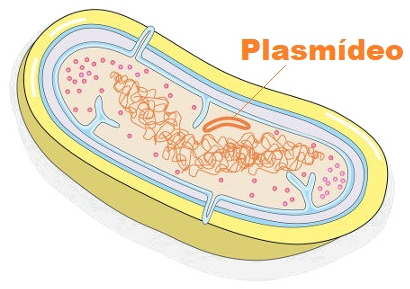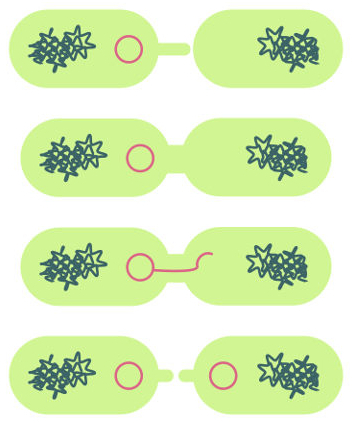You plasmids can be defined as small molecules of DNA that are found in bacteria and also in yeast. In this text we will focus on plasmids present in bacteria.
Read too: Bacteria
→ Characteristics of bacterial plasmids
As stated, plasmids are extrachromosomal circular DNA molecules. They have the cability to replicate independently and usually have few genes. It is noteworthy that in a cell several copies of plasmids can be found and that they are often transferred from one cell to another.
→ Function of bacterial plasmids
Plasmids usually have genetic information that is not extremely essential for the survival of the bacteria, but they are usually related to some adaptive function for special situations. As an example, we can mention those plasmids that guarantee antibiotic resistance and those that increase the likelihood that a bacterial cell will cause disease.

The plasmid is an extrachromosomal circular DNA
→ Plasmid classification
Plasmids can be classified in different ways, and it is possible to identify, for example, two basic groups:
Conjugatives: These plasmids ensure the start of conjugation, a process in which there is an exchange of genetic material between bacteria.
Non-conjugatives: These plasmids do not allow the initiation of conjugation.

The conjugation process guarantees the transfer of genes from a donor bacterium to a recipient
Plasmids can be further classified according to their function in the cell into five groups:
Fertility plasmids (F): Promote the beginning of conjugation;
Resistance plasmids (R): They guarantee resistance to antibiotics and other substances that can harm the bacteria;
Virulence plasmids: They make bacteria capable of causing disease;
Col plasmids: They guarantee the production of colicins, which can be lethal to other bacteria;
Degradation plasmids: They guarantee the cell the ability to produce degradative enzymes.
By Ma. Vanessa dos Santos
Source: Brazil School - https://brasilescola.uol.com.br/o-que-e/biologia/o-que-sao-plasmideos.htm
